Plants employ immune receptors to perceive pathogen-associated molecular patterns (PAMPs) to trigger immune signaling. How plants impede pathogen progression following successful signal transduction, however, has remained largely elusive. Plants produce diverse secondary metabolites, called phytoalexins, in response to pathogen infections. Various phytoalexins show strong lineage specificity and are believed to act upon microbes by growth inhibition or toxicity. Whether any phytoalexins protect plants by targeting specialized virulence machinery of pathogens has not been well studied. For instance, numerous gram-negative bacterial pathogens employ the type III secretion system (T3SS), a multiprotein injectisome, to deliver virulence proteins into animal and plant host cells for pathogenesis. Immune-activated plants are known to possess activity that inhibits the bacterial T3SS, although the nature of this activity and underlying mechanism remain unknown. This immune-induced anti-T3SS activity serves as a model to investigate potential antivirulence phytoalexins in plants.
Junping Fan*, Wenjun Xie, Han Ke, Jing Zhang, Jin Wang, Haijun Wang, Nianxin Guo, Yingjie Bai, Xiaoguang Lei*
JACS Au 2025, https://doi.org/10.1021/jacsau.4c01188
The urate transporter 1 (URAT1) is the primary urate transporter in the kidney responsible for urate reabsorption and, therefore, is crucial for urate homeostasis. Hyperuricemia causes the common human disease gout and other pathological consequences. Inhibition of urate reabsorption through URAT1 has been shown as a promising strategy in alleviating hyperuricemia, and clinical and preclinical drug candidates targeting URAT1 are emerging. However, how small molecules inhibit URAT1 remains undefined, and the lack of accurate URAT1 complex structures hinders the development of better therapeutics. Here, we present cryoelectron microscopy structures of a humanized rat URAT1 bound with benzbromarone, lingdolinurad, and verinurad, elucidating the structural basis for drug recognition and inhibition. The three small molecules reside in the URAT1 central cavity with different binding modes, locking URAT1 in an inward-facing conformation. This study provides mechanistic insights into the drug modulation of URAT1 and sheds light on the rational design of potential URAT1-specific therapeutics for treating hyperuricemia.
Recently, ligand-promoted Au(I)/Au(III)-catalyzed cross-coupling reactions with aryl iodides have garnered considerable attention. Here, we report the first visible-light-driven gold-catalyzed cross-couplings of challenging aryl bromides. In the presence of a (P, N)-gold(I) catalyst and an acridinium photocatalyst under blue LED irradiation, C–O coupling of aryl bromides with carboxylic acids was achieved, and soon it was found that this photoinduced gold-catalyzed cross-coupling of aryl bromides was appliable for other C–C, C–N, and C–S bond formation. Experimental and computational studies suggest that this visible-light-driven gold-catalyzed cross-couplings of aryl bromides involves two discrete photoinduced energy transfer (EnT) events: first, energy transfer (EnT) from a photosensitizer produces an excited-state gold(I) complex that allows the bottleneck oxidative addition of aryl bromides to form an aryl Au(III) complex and second, the reductive elimination of aryl-Au(III) complex to regenerate Au(I). Collectively, the new synergistic catalytic method developed here highlights the tremendous potential of photochemical gold catalysis via excited-state organogold complexes, as well as its potential to facilitate drug discovery due to the biocompatibility and mildness of the reaction conditions.
Yi Yang, Ling Jiao, Fusheng Guo, Yibin Sun, Hongyang Cui, Xiaoguang Lei, Jianying Hu, Yi Wan*
Environ. Sci. Technol. 2025, 59, 5, 2368–2377.
Metabolism-disrupting chemicals (MDCs) have attracted widespread attention due to their contributions to the prevalence of metabolic diseases worldwide. The farnesoid X receptor (FXR) is a typical lipid-sensing nuclear receptor and plays a crucial role in the development of metabolic diseases. However, few studies have examined the FXR activities of environmental samples and the corresponding MDCs. In this study, we found FXR-antagonistic activities in 93.6% of source water, surface water, and wastewater samples (n = 78) collected from the Yangtze River and Yellow River. An FXR protein-affinity guided nontargeted analysis was performed and identified 79 potential FXR-active pollutants in samples from these two rivers. Nine of these pollutants exhibited strong FXR-antagonistic activities (IC50: 2.39–141.9 μM), and 6 pollutants, including triphenyl phosphate (TPHP), 4,4′-sulfonylbis[2-(2-propenyl) phenol (TGSA), tonalid (AHTN), dichlorophen, etoxazole (ETX), and loratadine, were identified to be FXR antagonists for the first time. The total concentrations of the nine FXR-antagonistic pollutants were relatively high in the middle and downstream reaches of the Yellow River and the downstream reaches of the Yangtze River, and two pollutants (TGSA and ETX) have not previously been found in aquatic environments. A risk prioritization analysis revealed that TPHP, TGSA, and AHTN are priority pollutants with the potential to affect the FXR. Appropriate management of these priority pollutants would reduce the health risks of metabolic disruptions associated with exposure to these MDCs.
Signal Transduction and Targeted Therapy, 2024, 9, 338.
Erythropoiesis is a crucial process in hematopoiesis, yet it remains highly susceptible to disruption by various diseases, which significantly contribute to the global challenges of anemia and blood shortages. Current treatments like erythropoietin (EPO) or glucocorticoids often fall short, especially for hereditary anemias such as Diamond-Blackfan anemia (DBA). To uncover new erythropoiesis-stimulating agents, we devised a screening system using primary human hematopoietic stem and progenitor cells (HSPCs). We discovered that BRAF inhibitors (BRAFi), commonly used to treat BRAFV600E melanoma, can unexpectedly and effectively promote progenitor cell proliferation by temporarily delaying erythroid differentiation. Notably, these inhibitors exhibited pronounced efficacy even under cytokine-restricted conditions and in patient samples of DBA. Mechanistically, although these BRAFi inhibit the MAPK cascade in BRAFV600E mutant cells, they paradoxically act as amplifiers in wild-type BRAF cells, potently enhancing the cascade. Furthermore, we found that while the oncogenic BRAFV600E mutation disrupts hematopoiesis and erythropoiesis through AP-1 hyperactivation, BRAFi minimally impact HSPC self-renewal and differentiation. In vivo studies have shown that BRAFi can enhance human hematopoiesis and erythropoiesis in severe immunodeficient mouse models and alleviate anemia in the Rpl11 haploinsufficiency DBA model, as well as other relevant anemia models. This discovery underscores the role of the MAPK pathway in hematopoiesis and positions BRAFi as a promising therapeutic option for improving hematopoietic reconstitution and treating anemias, including DBA.
Excessive activation of the stimulator of the interferon gene (STING) pathway has been identified as a significant contributor to various autoimmune diseases, such as STINGassociated vasculopathy with infantile-onset (SAVI) and inflammatory bowel disease (IBD). However, discovering effective STING antagonists for treating STING-mediated autoimmune disorders remains challenging. Herein, we identified the natural product anhydrotuberosin (ATS) as a potent STING antagonist by a high-throughput chemical screen and follow-up biological validations. However, the limited supply from natural product isolation impeded the pharmacological evaluations of ATS. Accordingly, we developed a concise and scalable total synthesis of ATS in 6 steps. Enabled by total synthesis, we further extensively investigated ATS’s mode of action and evaluated its therapeutic potential. Remarkably, ATS inhibits STING signaling in PBMCs derived from three SAVI patients. ATS showed decent pharmacokinetic parameters and strongly alleviated tissue inflammation in DSS-induced IBD colitis and Trex1-/- autoimmune animal models with low toxicity. Collectively, this research lays the foundation for developing novel STING antagonists as an effective therapy for autoinflammatory and autoimmune diseases.
Chronic itch is a debilitating symptom profoundly impacting the quality of life in patients with liver diseases like cholestasis. Activation of the human G-protein coupled receptor, MRGPRX4 (hX4), by bile acids (BAs) is implicated in promoting cholestasis itch. However, the detailed underlying mechanisms remain elusive. Here, we identified 3-sulfated BAs that are elevated in cholestatic patients with itch symptoms. We solved the cryo-EM structure of hX4-Gq in a complex with 3-phosphated deoxycholic acid (DCA-3P), a mimic of the endogenous 3-sulfated deoxycholic acid (DCA-3S). This structure revealed an unprecedented ligand-binding pocket in MRGPR family proteins, highlighting the crucial role of the 3-hydroxyl (3-OH) group on BAs in activating hX4. Guided by this structural information, we designed and developed compound 7 (C7), a BA derivative lacking the 3-OH. Notably, C7 effectively alleviates hepatic injury and fibrosis in liver disease models while significantly mitigating the itch side effects.
Fusheng Guo, Fan Xiao, Hao Song, Xiaoyong Li, Yaxin Xiao, Yong Qin,* and Xiaoguang Lei*
ACS central science, 2024. DOI: 10.1021/acscentsci.4c01167
Methicillin-resistant Staphylococcus aureus (MRSA) is a common pathogenic bacterium that causes clinical infection and has become one of the most prominent antibiotic-resistant bacteria in the world. There is a pressing need to develop new antibiotics based on novel modes of action to combat increasingly severe MRSA infection. Marinopyrrole A (MA), a natural product extracted from marine Streptomyces in 2008, has a unique bipyrrole chemical skeleton and shows potent antibacterial activity against MRSA. However, its mode of action is still elusive. Herein, we developed an optimized MA derivative, MA-D1, and applied a chemoproteomic approach to reveal that MA-D1 performs its anti-MRSA activity by directly targeting 6-phosphoglucosamine synthetase (GlmS) to cause the breakdown of bacterial cell wall biosynthesis. Computational and experimental studies showed that MA-D1 interacts with the key R381 and E382 residues of GlmS in a novel binding pocket. Furthermore, MA-D1 showed a low resistance frequency for MRSA treatment and was also sensitive against the linezolid-, vancomycin-, or teicoplanin-resistant MRSA strains. MA-D1 also showed in vivo antibiotic efficacy in multiple animal models. This study demonstrates the promising potential of targeting GlmS to develop a new class of antibiotics to control MRSA pathogen infection.
Science, 25 Oct 2024 Vol 386, Issue 6720 DOI: 10.1126/science.adl0799
Tardigrades are captivating organisms known for their resilience in extreme environments, including ultra-high-dose radiation, but the underlying mechanisms of this resilience remain largely unknown. Using genome, transcriptome, and proteome analysis of Hypsibius henanensis sp. nov., we explored the molecular basis contributing to radiotolerance in this organism. A putatively horizontally transferred gene, DOPA dioxygenase 1 (DODA1), responds to radiation and confers radiotolerance by synthesizing betalain —a type of plant pigment with free radical-scavenging properties. A tardigrade-specific radiation-induced disordered protein, TRID1, facilitates DNA damage repair through a mechanism involving phase separation. Two mitochondrial respiratory chain complex assembly proteins, BCS1 and NDUFB8, accumulate to accelerate nicotinamide adenine dinucleotide (NAD+) regeneration for poly (adenosine diphosphate–ribosyl)ation (PARylation) and subsequent poly(adenosine diphosphate–ribose) polymerase 1 (PARP1)–mediated DNA damage repair. These three observations expand our understanding of mechanisms of tardigrade radiotolerance.
Jin Wang, Jianxiong Zhao, Zhenyang Yu, Siyuan Wang, Fusheng Guo, Jun Yang, Lei Gao, Xiaoguang Lei*
Angew. Chem. Int. Ed. 2024, e202414340
The bisbenzylisoquinoline alkaloids (bisBIAs) have attracted tremendous attention from the synthetic community due to their diverse and intriguing biological activities. Herein, we report the convergent and modular chemoenzymatic syntheses of eight bisBIAs bearing various substitutes and linkages in 5-7 steps. The gram-scale synthesis of various well-designed enantiopure benzylisoquinoline monomers was accomplished via an enzymatic stereoselective Pictet–Spengler reaction, followed by regioselective enzymatic methylation or chemical functionalizations in a sequential one-pot process. A modified intermolecular copper-mediated Ullmann coupling enabled the concise and efficient total synthesis of five different linear bisBIAs with either head-to-tail or tail-to-tail linkage. A biomimetic oxidative phenol dimerization selectively formed the sterically hindered, electron-rich diaryl ether bond, and subsequent intramolecular Suzuki–Miyaura domino reaction or Ullmann coupling facilitated the first enantioselective total synthesis of three macrocyclic bisBIAs, including ent-isogranjine, tetrandrine and O-methylrepandine. This study highlights the great potential of chemoenzymatic strategies in the total synthesis of diverse bisBIAs and paves the way to further explore the biological functions of these natural products.
-
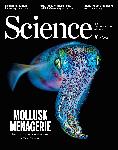
-

-
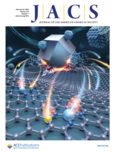
-

-
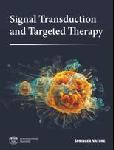
-
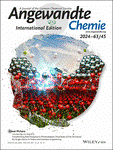
-

-

-
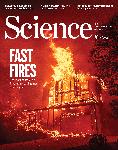
-
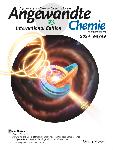
A widespread plant defense compound disarms bacterial type III injectisome assembly
Pei Miao†, Haijun Wang†, Wei Wang†, Zhengdong Wang, Han Ke, Hangyuan Cheng, Jinjing Ni, Jingnan Liang, Yu-Feng Yao, Jizong Wang, Jian-Min Zhou*, Xiaoguang Lei*
Science, 2025, 387, eads0377.
Plants employ immune receptors to perceive pathogen-associated molecular patterns (PAMPs) to trigger immune signaling. How plants impede pathogen progression following successful signal transduction, however, has remained largely elusive. Plants produce diverse secondary metabolites, called phytoalexins, in response to pathogen infections. Various phytoalexins show strong lineage specificity and are believed to act upon microbes by growth inhibition or toxicity. Whether any phytoalexins protect plants by targeting specialized virulence machinery of pathogens has not been well studied. For instance, numerous gram-negative bacterial pathogens employ the type III secretion system (T3SS), a multiprotein injectisome, to deliver virulence proteins into animal and plant host cells for pathogenesis. Immune-activated plants are known to possess activity that inhibits the bacterial T3SS, although the nature of this activity and underlying mechanism remain unknown. This immune-induced anti-T3SS activity serves as a model to investigate potential antivirulence phytoalexins in plants.
Structural Basis for Inhibition of Urate Reabsorption in URAT1
Junping Fan*, Wenjun Xie, Han Ke, Jing Zhang, Jin Wang, Haijun Wang, Nianxin Guo, Yingjie Bai, Xiaoguang Lei*
JACS Au 2025,
https://doi.org/10.1021/jacsau.4c01188
The urate transporter 1 (URAT1) is the primary urate transporter in the kidney responsible for urate reabsorption and, therefore, is crucial for urate homeostasis. Hyperuricemia causes the common human disease gout and other pathological consequences. Inhibition of urate reabsorption through URAT1 has been shown as a promising strategy in alleviating hyperuricemia, and clinical and preclinical drug candidates targeting URAT1 are emerging. However, how small molecules inhibit URAT1 remains undefined, and the lack of accurate URAT1 complex structures hinders the development of better therapeutics. Here, we present cryoelectron microscopy structures of a humanized rat URAT1 bound with benzbromarone, lingdolinurad, and verinurad, elucidating the structural basis for drug recognition and inhibition. The three small molecules reside in the URAT1 central cavity with different binding modes, locking URAT1 in an inward-facing conformation. This study provides mechanistic insights into the drug modulation of URAT1 and sheds light on the rational design of potential URAT1-specific therapeutics for treating hyperuricemia.
Photosensitized Gold-Catalyzed Cross-Couplings of Aryl Bromides
Jiawen Wu, Fusheng Guo, Chenju Yi, Rongjie Yang, Xiaoguang Lei, Zhonghua Xia*
J. Am. Chem. Soc. 2025, 147, 7, 5839–5850.
Recently, ligand-promoted Au(I)/Au(III)-catalyzed cross-coupling reactions with aryl iodides have garnered considerable attention. Here, we report the first visible-light-driven gold-catalyzed cross-couplings of challenging aryl bromides. In the presence of a (P, N)-gold(I) catalyst and an acridinium photocatalyst under blue LED irradiation, C–O coupling of aryl bromides with carboxylic acids was achieved, and soon it was found that this photoinduced gold-catalyzed cross-coupling of aryl bromides was appliable for other C–C, C–N, and C–S bond formation. Experimental and computational studies suggest that this visible-light-driven gold-catalyzed cross-couplings of aryl bromides involves two discrete photoinduced energy transfer (EnT) events: first, energy transfer (EnT) from a photosensitizer produces an excited-state gold(I) complex that allows the bottleneck oxidative addition of aryl bromides to form an aryl Au(III) complex and second, the reductive elimination of aryl-Au(III) complex to regenerate Au(I). Collectively, the new synergistic catalytic method developed here highlights the tremendous potential of photochemical gold catalysis via excited-state organogold complexes, as well as its potential to facilitate drug discovery due to the biocompatibility and mildness of the reaction conditions.
Protein-Affinity Guided Nontargeted Analysis Reveals the Widespread FXR-Antagonistic Pollutants in Surface Water and Source Water Along the Yangtze River and Yellow River
Yi Yang, Ling Jiao, Fusheng Guo, Yibin Sun, Hongyang Cui, Xiaoguang Lei, Jianying Hu, Yi Wan*
Environ. Sci. Technol. 2025, 59, 5, 2368–2377.
Metabolism-disrupting chemicals (MDCs) have attracted widespread attention due to their contributions to the prevalence of metabolic diseases worldwide. The farnesoid X receptor (FXR) is a typical lipid-sensing nuclear receptor and plays a crucial role in the development of metabolic diseases. However, few studies have examined the FXR activities of environmental samples and the corresponding MDCs. In this study, we found FXR-antagonistic activities in 93.6% of source water, surface water, and wastewater samples (n = 78) collected from the Yangtze River and Yellow River. An FXR protein-affinity guided nontargeted analysis was performed and identified 79 potential FXR-active pollutants in samples from these two rivers. Nine of these pollutants exhibited strong FXR-antagonistic activities (IC50: 2.39–141.9 μM), and 6 pollutants, including triphenyl phosphate (TPHP), 4,4′-sulfonylbis[2-(2-propenyl) phenol (TGSA), tonalid (AHTN), dichlorophen, etoxazole (ETX), and loratadine, were identified to be FXR antagonists for the first time. The total concentrations of the nine FXR-antagonistic pollutants were relatively high in the middle and downstream reaches of the Yellow River and the downstream reaches of the Yangtze River, and two pollutants (TGSA and ETX) have not previously been found in aquatic environments. A risk prioritization analysis revealed that TPHP, TGSA, and AHTN are priority pollutants with the potential to affect the FXR. Appropriate management of these priority pollutants would reduce the health risks of metabolic disruptions associated with exposure to these MDCs.
BRAF inhibitors enhance erythropoiesis and treat anemia through paradoxical activation of MAPK signaling
Shunkang Wu, Yuelin Deng, Haobo Sun, Xuewen Liu, Shuo Zhou, Hanxi Zhao, Huan Li, Fusheng Guo, Qiuyu Yue, Fan Wu, … Xiao-Jun Huang, Xiaoguang Lei, Xiangmin Tong, Xiaofei Gao & Hsiang-Ying Lee
Signal Transduction and Targeted Therapy, 2024, 9, 338.
Erythropoiesis is a crucial process in hematopoiesis, yet it remains highly susceptible to disruption by various diseases, which significantly contribute to the global challenges of anemia and blood shortages. Current treatments like erythropoietin (EPO) or glucocorticoids often fall short, especially for hereditary anemias such as Diamond-Blackfan anemia (DBA). To uncover new erythropoiesis-stimulating agents, we devised a screening system using primary human hematopoietic stem and progenitor cells (HSPCs). We discovered that BRAF inhibitors (BRAFi), commonly used to treat BRAFV600E melanoma, can unexpectedly and effectively promote progenitor cell proliferation by temporarily delaying erythroid differentiation. Notably, these inhibitors exhibited pronounced efficacy even under cytokine-restricted conditions and in patient samples of DBA. Mechanistically, although these BRAFi inhibit the MAPK cascade in BRAFV600E mutant cells, they paradoxically act as amplifiers in wild-type BRAF cells, potently enhancing the cascade. Furthermore, we found that while the oncogenic BRAFV600E mutation disrupts hematopoiesis and erythropoiesis through AP-1 hyperactivation, BRAFi minimally impact HSPC self-renewal and differentiation. In vivo studies have shown that BRAFi can enhance human hematopoiesis and erythropoiesis in severe immunodeficient mouse models and alleviate anemia in the Rpl11 haploinsufficiency DBA model, as well as other relevant anemia models. This discovery underscores the role of the MAPK pathway in hematopoiesis and positions BRAFi as a promising therapeutic option for improving hematopoietic reconstitution and treating anemias, including DBA.
Discovery and Total Synthesis of Anhydrotuberosin as a STING Antagonist for Treating Autoimmune Diseases
Fusheng Guo, Jing Zhang, Yihui Gao, Zhou
Shu, Fei Sun, Jing Ma, Xu Zhou, Wenyang Li, Huawei
Mao*, Xiaoguang Lei*
Angew. Chem. Int. Ed. 2024, e202407641
Excessive activation of the stimulator of the interferon gene (STING) pathway has been identified as a significant contributor to various autoimmune diseases, such as STINGassociated vasculopathy with infantile-onset (SAVI) and inflammatory bowel disease (IBD). However, discovering effective STING antagonists for treating STING-mediated autoimmune disorders remains challenging. Herein, we identified the natural product anhydrotuberosin (ATS) as a potent STING antagonist by a high-throughput chemical screen and follow-up biological validations. However, the limited supply from natural product isolation impeded the pharmacological evaluations of ATS. Accordingly, we developed a concise and scalable total synthesis of ATS in 6 steps. Enabled by total synthesis, we further extensively investigated ATS’s mode of action and evaluated its therapeutic potential. Remarkably, ATS inhibits STING signaling in PBMCs derived from three SAVI patients. ATS showed decent pharmacokinetic parameters and strongly alleviated tissue inflammation in DSS-induced IBD colitis and Trex1-/- autoimmune animal models with low toxicity. Collectively, this research lays the foundation for developing novel STING antagonists as an effective therapy for autoinflammatory and autoimmune diseases.
Structure-guided discovery of bile acid derivatives for treating liver diseases without causing itch
Jun Yang, Tianjun Zhao, Junping Fan, Huaibin Zou, Guangyi Lan, Fusheng Guo, Yaocheng Shi, Han Ke, Huasheng Yu, Zongwei Yue, Xin Wang, Yingjie Bai, Shuai Li, Yingjun Liu, Xiaoming Wang, Yu Chen, Yulong Li, Xiaoguang Lei
Cell, October 29, 2024
Chronic itch is a debilitating symptom profoundly impacting the quality of life in patients with liver diseases like cholestasis. Activation of the human G-protein coupled receptor, MRGPRX4 (hX4), by bile acids (BAs) is implicated in promoting cholestasis itch. However, the detailed underlying mechanisms remain elusive. Here, we identified 3-sulfated BAs that are elevated in cholestatic patients with itch symptoms. We solved the cryo-EM structure of hX4-Gq in a complex with 3-phosphated deoxycholic acid (DCA-3P), a mimic of the endogenous 3-sulfated deoxycholic acid (DCA-3S). This structure revealed an unprecedented ligand-binding pocket in MRGPR family proteins, highlighting the crucial role of the 3-hydroxyl (3-OH) group on BAs in activating hX4. Guided by this structural information, we designed and developed compound 7 (C7), a BA derivative lacking the 3-OH. Notably, C7 effectively alleviates hepatic injury and fibrosis in liver disease models while significantly mitigating the itch side effects.
An Optimized Marinopyrrole A Derivative Targets 6‑Phosphoglucosamine Synthetase to Inhibit Methicillin-Resistant Staphylococcus aureus
Fusheng Guo, Fan Xiao, Hao Song, Xiaoyong Li, Yaxin Xiao, Yong Qin,* and Xiaoguang Lei*
ACS central science, 2024. DOI: 10.1021/acscentsci.4c01167
Methicillin-resistant Staphylococcus aureus (MRSA) is a common pathogenic bacterium that causes clinical infection and has become one of the most prominent antibiotic-resistant bacteria in the world. There is a pressing need to develop new antibiotics based on novel modes of action to combat increasingly severe MRSA infection. Marinopyrrole A (MA), a natural product extracted from marine Streptomyces in 2008, has a unique bipyrrole chemical skeleton and shows potent antibacterial activity against MRSA. However, its mode of action is still elusive. Herein, we developed an optimized MA derivative, MA-D1, and applied a chemoproteomic approach to reveal that MA-D1 performs its anti-MRSA activity by directly targeting 6-phosphoglucosamine synthetase (GlmS) to cause the breakdown of bacterial cell wall biosynthesis. Computational and experimental studies showed that MA-D1 interacts with the key R381 and E382 residues of GlmS in a novel binding pocket. Furthermore, MA-D1 showed a low resistance frequency for MRSA treatment and was also sensitive against the linezolid-, vancomycin-, or teicoplanin-resistant MRSA strains. MA-D1 also showed in vivo antibiotic efficacy in multiple animal models. This study demonstrates the promising potential of targeting GlmS to develop a new class of antibiotics to control MRSA pathogen infection.
Multi-omics landscape and molecular basis of radiation tolerance in a tardigrade
Lei Li, Zhengping Ge, Shihao Liu, Kun Zheng, Yaqi Li, Kaiqi Chen, Yesheng Fu, Xiaoguang Lei, Zeling Cui, Yifan Wang, Jin Huang, Yanyan Liu, Mingwang Duan, Zimei Sun, Jun Chen, Liangwei Li, Pan Shen, Guibin Wang, Junmiao Chen, Ruochong Li, Chaoran Li, Zhixiang Yang, Yifan Ning, Arong Luo, Baoyu Chen, Inge Seim, Xin Liu, Fei Wang, Yishan Yao, Fusheng Guo, Maojun Yang, Cui Hua Liu, Guangyi Fan, Lizhi Wang, Dong Yang, Lingqiang Zhang.
Science, 25 Oct 2024
Vol 386, Issue 6720
DOI: 10.1126/science.adl0799
Tardigrades are captivating organisms known for their resilience in extreme environments, including ultra-high-dose radiation, but the underlying mechanisms of this resilience remain largely unknown. Using genome, transcriptome, and proteome analysis of Hypsibius henanensis sp. nov., we explored the molecular basis contributing to radiotolerance in this organism. A putatively horizontally transferred gene, DOPA dioxygenase 1 (DODA1), responds to radiation and confers radiotolerance by synthesizing betalain —a type of plant pigment with free radical-scavenging properties. A tardigrade-specific radiation-induced disordered protein, TRID1, facilitates DNA damage repair through a mechanism involving phase separation. Two mitochondrial respiratory chain complex assembly proteins, BCS1 and NDUFB8, accumulate to accelerate nicotinamide adenine dinucleotide (NAD+) regeneration for poly (adenosine diphosphate–ribosyl)ation (PARylation) and subsequent poly(adenosine diphosphate–ribose) polymerase 1 (PARP1)–mediated DNA damage repair. These three observations expand our understanding of mechanisms of tardigrade radiotolerance.
Concise and Modular Chemoenzymatic Total Synthesis of Bisbenzylisoquinoline Alkaloids
Jin Wang, Jianxiong Zhao, Zhenyang Yu,
Siyuan Wang, Fusheng Guo, Jun Yang, Lei Gao, Xiaoguang Lei*
Angew. Chem. Int. Ed. 2024, e202414340
The bisbenzylisoquinoline alkaloids (bisBIAs) have attracted tremendous attention from the synthetic community due to their diverse and intriguing biological activities. Herein, we report the convergent and modular chemoenzymatic syntheses of eight bisBIAs bearing various substitutes and linkages in 5-7 steps. The gram-scale synthesis of various well-designed enantiopure benzylisoquinoline monomers was accomplished via an enzymatic stereoselective Pictet–Spengler reaction, followed by regioselective enzymatic methylation or chemical functionalizations in a sequential one-pot process. A modified intermolecular copper-mediated Ullmann coupling enabled the concise and efficient total synthesis of five different linear bisBIAs with either head-to-tail or tail-to-tail linkage. A biomimetic oxidative phenol dimerization selectively formed the sterically hindered, electron-rich diaryl ether bond, and subsequent intramolecular Suzuki–Miyaura domino reaction or Ullmann coupling facilitated the first enantioselective total synthesis of three macrocyclic bisBIAs, including ent-isogranjine, tetrandrine and O-methylrepandine. This study highlights the great potential of chemoenzymatic strategies in the total synthesis of diverse bisBIAs and paves the way to further explore the biological functions of these natural products.